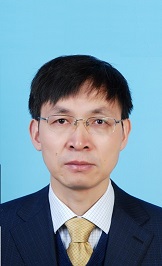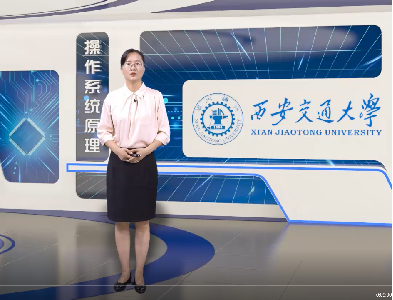
Signals and Systems课程:前往报名学习
The future is here: we have entered the era characterized with informationization and intelligentization, for which Signals and Systems provides the fundamental theories and analytical methods. The course paves the way for the students in relevant majors by establishing the crucial concepts of spectrum and transfer functions, fitting better in the future. The teaching group of the course is led by Dr. Houjin CHEN, a national distinguished teacher.
开设学校:北京交通大学;学科:工学、
The future is here: we have entered the era characterized with informationization and intelligentization, for which Signals and Systems provides the fundamental theories and analytical methods. The course paves the way for the students in relevant majors by establishing the crucial concepts of spectrum and transfer functions, fitting better in the future. The teaching group of the course is led by Dr. Houjin CHEN, a national distinguished teacher.
-1.1 Introduction to signals and sytems
--1.1 Introduction to signals and systems
-1.2 Classification of signals
--1.2 Classification of signals
-1.3 Classification of systems
--1.3 Classification of systems I
--1.3 Classification of systems II
-Exercise
--Exercise for Chapter 1
-Homework for Chapter 1
-Discussion topics for Chapter 1
-2.1 Elementary continuous-time signals
--2.1 Elementary continuous-time signals: regular
--2.1 Elementary continuous-time signals: singularity
-2.2 Basic operations on continuous-time signals
--2.2 Basic operations on continuous-time signals I
--2.2 Basic operations on continuous-time signals II
-2.3 Elementary discrete-time signals
--2.3 Elementary discrete-time signals I
--2.3 Elementary discrete-time signals II
-2.4 Basic operations on discrete-time signals
--2.4 Basic operations on discrete-time signals
-2.5 Signal decomposition
-2.6 Tutorial
-2.7 Signal analysis in time with MATLAB
--2.7 Signal analysis in the time domain with MATLAB
-Exercise
--Exercise for Chapter 2
-Homework for Chapter 2
-Discussion topics for Chapter 2
-3.1 Description of linear time-invariant systems in the time domain
--3.1 Description of linear time-invariant systems in the time domain
-3.2 Response analysis of continuous-time LTI systems in the time domain
--3.2 Response analysis of continuous-time LTI systems
-3.3 Response evaluation of continuous-time LTI systems
--3.3 Response evaluation of continuous-time LTI systems I
--3.3 Response evaluation of continuous-time LTI systems II
--3.3 Response evaluation of continuous-time LTI systems III
--3.3 Response evaluation of continuous-time LTI systems IV
-3.4 Impulse response for continuous-time LTI system characterization
--3.4 Impulse response for continuous-time LTI system characterization
-3.5 Tutorial for response evaluation of continuous-time LTI systems
--3.5 Tutorial for response evaluation of continuous-time LTI systems
-3.6 Response analysis of discrete-time LTI systems in the time domain
--3.6 Response analysis of discrete-time LTI systems in the time domain
-3.7 Response evaluation of discrete-time LTI systems
--3.7 Response evaluation of discrete-time LTI systems I
--3.7 Response evaluation of discrete-time LTI systems II
-3.8 Impulse response of discrete-time LTI system characterization
--3.8 Impulse response of discrete-time LTI system characterization
-3.9 Tutorial for response evaluation of discrete-time LTI systems
--3.9 Tutorial for response evaluation of discrete-time LTI systems
-3.10 Analysis of systems in the time domain with MATLAB
--3.10 Analysis of systems in the time domain with MATLAB
-Exercise
--Exercise for Chapter 3
-Homework for Chapter 3
-Discussion topics for Chapter 3
-Exam for Chapters 1-3
-4.1 Fourier analysis of periodic C-T signals
--4.1 Why analyze signals in the frequency domain
--4.1 Fourier representation of periodic C-T signals
--4.1 Spectrum of periodic C-T signals
--4.1 Properties of Fourier series for periodic C-T signals
-4.2 Frequency analysis of nonperiodic C-T signals
--4.2 Fourier representation of nonperiodic C-T signals
--4.2 Spectra of common nonperiodic C-T signals
--4.2 Properties of Fourier transform I
--4.2 Properties of Fourier transform II
--4.2 Applications of the properties of Fourier transform
-4.3 Fourier analysis of periodic D-T sequences
--4.3 Fourier representation of periodic D-T sequence
--4.3 Spectra of common periodic D-T sequences
--4.3 Properties of discrete Fourier series
-4.4 Fourier analysis of nonperiodic D-T sequences
--4.4 Fourier representation of nonperiodic D-T sequences
--4.4 Spectra of common nonperiodic D-T sequences
-4.5 Sampling of signals in the time domain
--4.5 Why sampling signals in the time domain
--4.5 How to sample signals in the time domain
--4.5 Sampling theory in the time domain
--4.5 Applications of sampling theory
-4.6 An example of signal analysis in the frequency domain
--4.6 An example of signal analysis in the frequency domain
-Homework for Chapter 4
-Discussion topics for Chapter 4
-5.1 Frequency response of a C-T LTI system
--5.1 Frequency response of a C-T LTI system
-5.2 Evaluation of the frequency response of a C-T LTI systems
--5.2 Evaluation of the frequency response of a C-T LTI systems
-5.3 Zero-state response of a C-T LTI system to signals
--5.3 Zero-state response of a C-T LTI system to signals
-5.4 Ideal analog filters
-5.5 Frequency response of a D-T LTI system
--5.5 Frequency response of a D-T LTI system
--5.5 Zero-state response of a D-T LTI system to D-T sequences
-5.6 Ideal digital filters
-5.7 Amplitude modulation and demodulation
--5.7 Amplitude modulation and demodulation
-Homework for Chapter 5
-Discussion topics for Chapter 5
-Exam for Chapters 4-5
-6.1 C-T signal representation in the complex frequency domain
--6.1 C-T signal representation in the complex frequency domain
-6.2 Unilateral Laplace transform of common C-T signals
--6.2 Unilateral Laplace transform of common C-T signals
-6.3 Properties of unilateral Laplace transform
--6.3 Properties of unilateral Laplace transform
-6.4 Evaluation of inverse Laplace transform
--6.4 Evaluation of inverse Laplace transform
-6.5 Bilateral Laplace transform and its inverse
--6.5 Bilateral Laplace transform and its inverse
-6.6 Description of C-T LTI systems in the complex frequency domain
--6.6 Description of C-T LTI systems in the complex frequency domain
-6.7 Transfer function and system properties
--6.7 Transform function and system properties
-6.8 Implementation of C-T LTI systems
--6.8 Implementation of C-T LTI systems
-6.9 Complex frequency analysis of C-T LTI system response
--6.9 Complex frequency analysis of C-T signals and systems
-6.10 Complex frequency analysis of signals and systems in MATLAB
--6.10 Complex frequency analysis of signals and systems in MATLAB
-Homework for Chapter 6
-Discussion topics for Chapter 6
-7.1 Representation of D-T signals in z-domain
--7.1 Representation of D-T sequences in z-domain
-7.2 Unilateral z-transform of common D-T sequences
--7.2 Unilateral z-transform of common D-T sequences
-7.3 Properties of unilateral z-transform
--7.3 Properties of unilateral z-transform
-7.4 Evaluation of unilateral z-transform
--7.4 Evaluation of inverse unilateral z-transform
-7.5 Bilateral z-transform and its inverse
--7.5 Bilateral z-transform and its inverse
-7.6 Description of D-T LTI systems in z-domain
--7.6 Description of D-T LTI systems in z-domain
-7.7 Transfer function and system properties
--7.7 Transfer function and system's properties
-7.8 Implementation of D-T LTI systems
--7.8 Implementation of D-T LTI systems
-7.9 z-domain analysis of system's responses
--7.9 z-domain analysis of system's responses
-7.10 Complex analysis of D-T signals and systems in MATLAB
--7.10 Complex analysis of D-T signals and systems in MATLAB
-Homework for Chapter 7
-Discussion topics for Chapter 7
-Exam for Chapters 6-7
国家级教学名师,国家“万人计划”领军人才,全国优秀教师,教育部电工电子教学指导委员会副主任,高等学校电路和信号系统研究会副理事长,中国高校电工电子在线课程联盟副理事长,北京电子学会教育委员会主任。主持建设了国家级实验教学示范中心、国家级教学团队;主持建设了国家级一流课程、国家级课程思政示范课程,国家级视频公开课、国家级精品资源共享课、国家级精品课程、国家双语教学示范课程;主编出版了多部国家级规划教材和国家级精品教材。主持国家和省部级研究项目20多项,发表研究论文200余篇。先后获得国家教学成果奖、高等院校青年教师霍英东教学奖、宝钢优秀教师特等奖等。
就职于北京交通大学电子信息工程学院,研究方向包括医学图像处理,模式识别与机器学习,计算机辅助诊断,诊断精度评价等,研究领域涉及计算机断层成像(CT)的算法与实现,组织病理学图像的处理与定量分析,磁共振图像(MRI)的定量分析等等。欢迎有共同爱好的同仁和学生一起在科技的道路上共同前进。
北京交通大学电子信息工程学院副教授,承担多项国家和省部级科研项目以及教学改革项目。近五年一直从事“信号与系统”和“数字信号处理”课程教学工作,在课程和教材建设方面获得多项国家级和省部级奖励,包括全国优秀教材二等奖、国家级一流课程、国家级课程思政示范课程、北京市教学成果奖等。
李居朋,博士,副教授 2009毕业于北京交通大学,2019年在美国UNC研修一年。主要从事模式识别和人工智能、医学图像处理等方面的科研工作。 主要讲授《信号与系统》,《数字图像处理》等课程。在本MOOC课程中主要承担维护与答疑工作。
2009毕业于武汉大学,2012-2014年间赴美国麻省理工学院交流访问,2014年毕业于中科院电子所,获工学博士学位,2014-2019在中科院电子所工作,曾任副研究员,2019年3月至今在北京交通大学任副教授。主要研究方向为雷达回波信号处理、基于深度学习的图像识别技术、频高图自动度量及剖面反演算法研究及电离层探测新技术研究等。作为负责人及主要人员参与国家自然科学基金项目、国家863项目、军队委托项目等多个项目。发表SCI论文十余篇,2014年曾获北京市科学技术三等奖。



